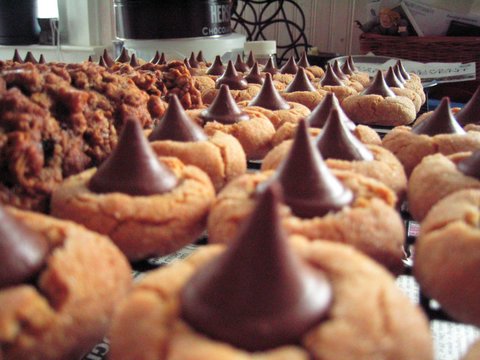As I may have blogged once or twice previously, making websites really fast is important to me. Recently, we’ve made a change that should help us improve the speed of not only www.lanecc.edu, but of many of Lane’s other websites, including this one.
When you request a webpage, in addition to fetching the page itself, you usually end up requesting each individual image, font, css sheet, and javascript sheet. Making those requests is expensive. There’s a sliding window, which limits how many requests you can make at once. So if the window size is 5, but you need to make 6 requests, you need to wait for one of the first 5 requests to finish before you can make the 6th. On the other hand, if you only need to make 5 requests, your browser can start rendering the page a lot sooner.
One way is to combine images into a css sprite. Here’s ours:
![]()
That’s 15 different images combined into one. And even though there’s empty space on the bottom right, it’s actually usually faster to fetch a slightly bigger image then it is to fetch each icon individually.
Another way is CSS and JavaScript aggregation. Most pages on our website have 35 CSS sheets and 35 JavaScript files – but after aggregation, you only end up requesting 7 of each (there’s reasons why 7 of each is better then just 1 CSS and 1 JS, but that’s outside the scope of what we’re doing here).
But the easiest way to speed up a request is to not make it at all. When you make a request, you send some request headers with it, that tell us things like if you’ll accept a compressed version and what language you prefer. Then we respond with a header that tells you how long you should keep our response cached on your computer. If you need that resource again before the expires time we gave you, you just use the local one, rather than fetching a new one.
In addition to sending headers with your request, and us sending different ones, we also send each other cookies.

Cookies are always set on a domain. When you log into Moodle, cookies are set on the domain classes.lanecc.edu, so Moodle knows on every page load that you’re logged in. But here, on the Lane website, we’re not so lucky, as you can actually use the website on either www.lanecc.edu, or on just lanecc.edu. So we set our cookies on .lanecc.edu. That little dot before lanecc.edu is critical. That tells your browser to send your cookies to all domains that end in lanecc.edu.
The downside is that those cookies are sent on every request to our domain – even requests that don’t need them, like the request your browser made to show you the picture of those cookies up there.
What does this have to do with static?
We’ve started moving relatively static (unchanging) resources, like the college logo and the megamenu onto the static asset server, which we’re putting on the domain static.lanecc.net. Since these resources are relatively unchanging, we can set a long expires time – maybe 30 or even 45 days in the future (for now, it’s set to 0minutes in the future, for testing). Once your browser has fetched them, you won’t need to fetch them again for a whole month. And because they’re not under the lanecc.edu domain, you won’t send any cookies (and we won’t send any back), making the few requests you do need to make even smaller.
If you’re really curious about the inner workings of our new static asset server, I’ve added some extra geeky content to the Our Tech Stack post.
In the months to come, we’ll keep migrating content onto the static asset server, trying to reuse resources between websites, so that the logo you see on myLane is served from the same URL as the logo you see in Moodle, reducing the number of requests you need to make, and making it simpler for us to update things in the future.
